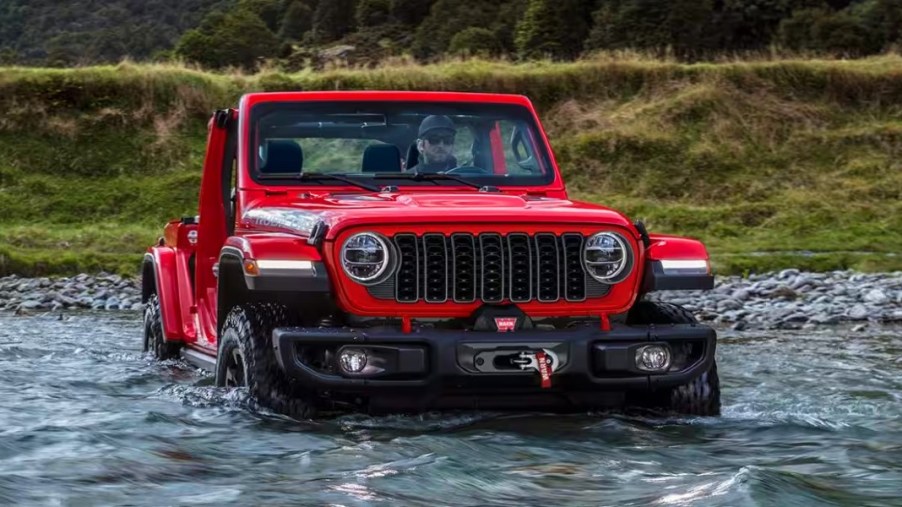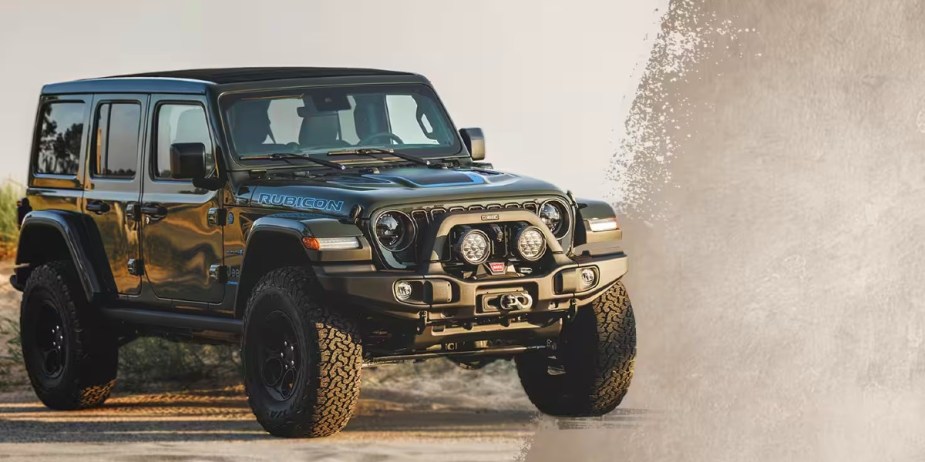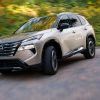
Do All Jeeps Come With Four-Wheel Drive Standard?
Folks may look at you as if you’ve confessed to high treason when you mention the Jeep Grand Cherokee Laredo small SUV you’re considering is a two-wheel-drive model. All Jeep SUVs are four-wheel drive after all, aren’t they? The fact is, Jeep offers its loyal following plenty of options, and the drivetrain is just one of the feature choices. So, if you’re a Jeep fan and keep the wheels on paved surfaces that rarely contend with winter conditions, a two-wheel-drive (2WD) may be the right choice for you. If, on the other hand, you’re looking for the complete package that only a four-wheel drive (4WD) Jeep model can deliver, keep reading.
What are Jeep’s drivetrain options?

Based on the World War II military Jeep, Willys-Overland, one of the Jeep’s manufacturers, created a civilian Jeep in 1944. The CJ was offered as a 2WD with a part-time four-wheel-drive system. Jeep began designing the wagon in 1946, which became the popular Willys Wagon created with a standard 2WD configuration. It wasn’t until 1949, that 4WD became an option. The introduction of the Dispatcher Jeep in 1959 led the CJ firmly into 2WD territory. The DJ, as it became known, is most recognizable as the post office delivery vehicle.
The J-Series pickups of the mid-1960s to 1971 were available as a standard 2WD with a 4WD option. The pickup was also the precursor to the reconfigured 2020 Gladiator, which is only available in 4WD. A variation of the Wagoneer, Jeep first introduced a 2WD option for the Cherokee in 1985. The Cherokee’s Sport, Latitude, Limited, and Overland are packaged as a 2WD with a 4WD option. The Trailhawk comes outfitted with 4WD.
The Grand Cherokee’s trim models include the Laredo, Limited, and Summit, each standard with 2WD and offering a 4WD option. The Trailhawk comes standard with the Quadra-Trac II Active 4WD system, and the Trackhawk is outfitted with a Quadra-Trac Active On-Demand 4WD. The Jeep Patriot comes standard with 2WD and offers 4WD options. The Jeep Renegade’s Sport, Latitude, and Limited are each standard with 2WD, and the Trailhawk is only featured with 4WD. The Compass follows suit with its 2WD trim packages and 4WD options.
The Wrangler small SUV picked up the reins in 1987 from the CJ’s meteoric run. Prior to 2011, the JK, Mountain, Sport, Unlimited, and Sahara all came standard with 2WD and offered a 4WD option. The Rubicon was only offered in 4WD. The turning point for the drivetrains of all Wrangler trim packages came in 2011. Each is now standard with 4WD.
What are the benefits of four-wheel drive?
There are definite benefits to driving a 2WD model, most notably the initial purchase savings, maintenance costs, and fuel economy. However, if your lifestyle places you in a gray area of possibly needing a 4WD vehicle, it may be worth considering the additional outlay to stay prepared for most eventualities.
For the majority of everyday driving conditions, 2WD not only provides ample torque and traction but is also advisable for managing wear and tear. On the other hand, moving off-road and traversing rocks, dirt roads, mud, streams, and just about anything nature’s sense of adventure presents requires 4WD capability.
In fact, it’s not necessary to go in search of challenges to prove your 4WD’s worth. Additionally, if you routinely encounter difficult weather conditions, like snow and ice, the added traction provided by engaging the 4WD allows your vehicle the control it needs to move out of a dangerous situation.
How much extra does four-wheel drive cost?
If you’re looking at a 2020 Grand Cherokee, for example, the Jeep site details each model and provides cost comparisons. There’s a 25% difference between the base model, Latitude, listed at $25,935, and the 4WD Trailhawk starting at $34,905. However, comparing the upgraded Limited at $31,545 with the Trailhawk nets a 10% difference.
While the vehicle’s additional upgrades also have a significant effect on the price comparisons, average differences between 2WD and 4WD range between 10 and 15%. Furthermore, a four-wheel drive powertrain is worth the money for drivers with a taste for adventure.


